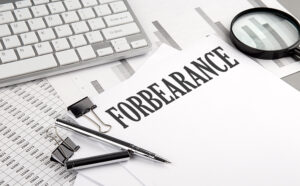 Four authors for the Urban Institute, make the case for the permanent forbearance plans offered to homeowners for specific life events such as job-loss, divorce, life-altering injury or illness, and even in cases of the death of one of the borrowers.
Four authors for the Urban Institute, make the case for the permanent forbearance plans offered to homeowners for specific life events such as job-loss, divorce, life-altering injury or illness, and even in cases of the death of one of the borrowers.
According to Katie Visalli, Laurie Goodman, Alexei Alexandrov, Ted Tozer, in the current system it is a fact that when someone loses their home, something in their life has gone wrong to put them down this path.
Extenuating circumstances, or in simpler terms the loss of income, occurs at a rate of 94.5% for mortgage defaults. Many times, severe financial pressures occur alongside emotional trauma from the event, but in these situations, forbearance could be offered to these otherwise credit-worthy borrowers averting them from the foreclosure process.
Before the pandemic, forbearance was uncommon at best, but according to the authors, normalizing these programs could benefit homeowners, communities, and even the lender.
The authors cite data from the Federal Government on the pandemic-era CARES Act which is required to publish their findings for the public. As a whole, these findings revealed that up to 8 million households took advantage of forbearances, likely stopping a large wave of foreclosures that would have resulted from high unemployment.
The author also cite a second report which corroborates data from the government using the National Mortgage Database.
So what would a world of normalized forbearance look like? Through the apparent success of pandemic-era forbearance programs, these forbearance programs could be expanded to cover any number of incidents, namely loss of employment, severe injury or illness, and death of a co-borrower.
“This policy is simply a limited extension of current policies, which all the servicers have implemented,” the group wrote. “Thus, the costs of such an extension would be near zero.”
“Under this forbearance policy, anyone who documented a financially disruptive life event could stop making mortgage payments without going into default and with minimal penalties to their credit score,” the group continued. “If the qualifying event were short term, the homeowner could continue with their mortgage as usual after the forbearance term expired.”
“In this case, the payments they did not make would be tacked onto the end of their loan without interest. The homeowner would end up paying the same amount for their mortgage when they could afford to do so. If they could not afford to continue making the same monthly payment as before, they would be considered for a modification to reduce their mortgage payments.”
All of this, if implemented correctly, would even allow those homeowners who are seriously underwater a few extra months to put their home on the market, softening a hit on their credit.
Under this new policy, borrowers would not need do go seriously-delinquent before applying for aid, as is how the system currently works. They further estimate if lenders offer these programs to just 5% of their borrowers, it would produce a total savings of $2,290 per loan.
So what would it take to normalize forbearance? It would take Fannie Mae, Freddie Mac, the Federal Housing Administration, and the Veterans Administration simply applying the process used during the pandemic, but on a broader scale.
“These entities have the power to make forbearance a regular part of the process for stopping foreclosures,” the group wrote. “Doing so would be easy; each institution can do so by itself, without needing agreement from any of the other entities or from Congress.”
“The GSEs, the FHA, and the VA should consider applying the lessons from the pandemic to institute a forbearance program that homeowners can rely on to maintain stability, even when life takes a turn.”
Click here to see the authors report in its entirety.

 DSNews The homepage of the servicing industry
DSNews The homepage of the servicing industry









